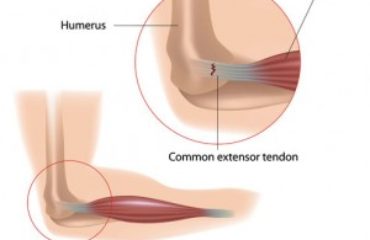Hairline or stress fractures are tiny cracks on a bone that happen as a result of stress from overuse but could be related to trauma from falls or accidents as well. Bones tend to be slightly elastic and can bend a little bit to absorb some of the less severe impacts. This is especially true for children. But when strain is continuously placed upon a bone, it can lead to microscopic cracks, which are known as hairline or stress fractures. While hairline fractures may heal with conservative, nonsurgical management, they can be painful and last for multiple weeks.
Hairline fracture of the elbow is not uncommon. Any repetitive physical activity that puts persistent strain on the elbow can develop a hairline fracture. They can be hard to detect as they may elicit only dull pain and cause mild tenderness. Patients usually find pain relief with common painkillers. The pain from a hairline fracture worsens with movement that puts further strain on the injured bone, which limits the range of motion.
There is associated tenderness and swelling in the elbow as well.
Hairline fractures of the elbow may also develop as a result of sudden changes to the intensity, duration, frequency, or type of physical activity of the arm.
There are a few factors that are associated with an elevated risk of developing hairline fractures of the elbow.
- They are more common in women.
- Pre-existing anatomic abnormalities can intensify the strain on the bones.
- Osteoporosis, osteomalacia, etc.
- Previous hairline fractures.
- Diet imbalances – low calcium, Vitamin D

Diagnosis
This begins with a physical examination and involves assessing for swelling, tenderness, bruising, range of motion, etc. Based on the findings, the doctor may order imaging tests, starting with an X-ray. However, if history warrants, a nuclear bone scan or even an MRI may be performed.
It is important to accurately detect hairline fractures as the injury may worsen with persistent physical activity, such as a full-blown fracture with associated soft tissue injuries, which can be difficult to treat.
Treatment
Most of the hairline fractures heal by themselves as long as the joint is immobilized and no further strain is exerted. The arm should be lifted frequently and ice pack should be applied to speed up healing and decrease swelling. By the end of 2 weeks, a lightweight bearing can be reintroduced gradually. Non-weight bearing activities, such as swimming, can be performed and are even helpful. One must avoid high-impact sports or activities during the recovery period, which can take between 6 to 8 weeks. If the fracture does not heal on its own with conservative management, surgery may be warranted.
Stiffness in the elbow is common after coming out of the cast or splint, which gets better on its own in a few months. In some cases, physical therapy may be needed to help restore motion. Long-term outcome in these types of fractures is generally excellent.


